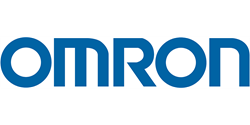All it takes is one missing component to put the brakes on manufacturing. Whether a company is heading to market with their first electronic device or is a well-established brand with multiple products, not being able to ship on time can hurt the bottom line.
Having a proactive component sourcing strategy is essential for keeping production moving and scale up to meet market demand. Businesses must be ready to navigate the unpredictable bumps in today’s electronics supply chain landscape.
Many forces affect components sourcing
A roadblock to getting a product out the door is shortages. In the last year, it’s been driven by new markets for off-the-shelf components, particularly automotive. With electronic content in cars skyrocketing thanks to advanced driver-assistance system (ADAS) and infotainment systems, as well as ongoing advances in autonomous vehicles, companies that make consumer products are competing with automakers for components. The rapidly growing Internet of Things (IoT) market is adding to supply chain pressures too.
The environment poses supply challenges in several ways as well. A major hurricane or a tsunami can radically disrupt a supply chain, even wiping out a source of common electronics components. Regulatory compliance to encourage mining that’s less damaging to the environment can increase costs as companies are compelled to institute systems to support compliance within their organization and within their supply chain.
Geopolitics can affect your ability to source components, including trade disputes and tariffs. For example, tariffs on goods produced in China introduced by the United States last summer increased the costs of components, and thereby finished goods. Regional conflicts can also affect the mining of raw materials, either leading to price increases or shortages.
New trade agreements could mean more countries are competing for components or manufacturing services. Even amicable updates to existing free trade agreements can influence supply and demand on electronics components.
All these forces create risk for your business and affect your ability to manufacture your product on time and on budget.
To manage risk, you must measure it
The many factors that can potentially affect components sourcing and a supply chain bring with them several risks to your business, both directly and indirectly.
A suppliers’ risks are their customers’ risks. Whether it’s bad weather, a change in government leadership or policy, or a shortage of raw material, whatever is negatively affecting their manufacturing facilities or logistics hubs could impact their customers’ operations too.
Just as companies put a plan in place if there was a disruption at within the organization, they also need to understand how the risks to their suppliers—and even their suppliers—could disrupt operations. Beyond accounting for any potential problems, it’s important know suppliers can ramp up production when there’s an uptick in demand.
To best understand risk, companies need to get know their suppliers. Where are their factories located? Where are their logistics hubs situated? If they are based in geographic regions fraught with political turmoil or more prone to natural disaster, it’s more likely a disruption to their operations that could affect their customers’. This holds true for secondary suppliers as well.
Generally speaking, it’s not a matter of whether or not a disaster will strike, it’s when. Are these suppliers ready if a natural disaster occurs? Do they rely on a single supplier that could be at risk? What about a major disruption to their infrastructure due to unforeseen equipment failure or massive data loss? Not only do these threats affect their ability to provide components and services, but their financial stability. And even when everything is running smoothly, how well funded are these suppliers before a disruption occurs? Are they well managed? Do they have money in the bank for unforeseen contingencies?
The risk management efforts of any supplier will determine the level of impact on their customers and how they mitigate those risks.
Always plan for the worst
To mitigate risk, it needs to be understood. That means knowing suppliers intimately and being prepared for something to go wrong.
Preparation starts with managing supplier relationships from the day components are initially sourced. It’s not enough to have documentation—establish close relationships with supplier representatives It never hurts to diversify supply sources to ensure a steady flow of components, as well as accommodate sudden production ramp ups.
If something does go wrong, keeping customers happy requires proactive planning and keeping tabs on any issues suppliers are facing and monitoring their operations, as well as auditing their track records.
It’s important to understand lead times even during the best of times. Strong forecasting capabilities must be in place so components can be ordered as far in advance as suppliers require so production schedules can be met. This is especially critical during shortages, regardless of the cause.
Proactive planning can mitigate a great deal of risk, but you can’t account for every variable. An effective response strategy can help with handling any curve balls. It should include concrete steps to maintain adequate inventory, as well as a team that can handle any disruptions to the supply chain. If a business can’t weather those disruptions without discernible impact to their customers, they must have a damage control plan.
Be vigilant and diligent
It’s impossible to completely eliminate risk to any supply chain but being proactive will increase the likelihood of being able to source the components when and where they are needed, and in adequate volumes. Keeping tabs on the challenges and crises suppliers face and taking stock of how well the company responded after rebounding from a disruption, can prepare companies for any unforeseen component supply crisis.
Interested in learning more?
Visit Arrow’s booth at CES 2019, located in the center of Eureka Park, where you can speak with one of the company’s on-site engineering and IoT specialists.
Original article found on eetimes.com

